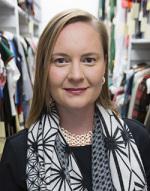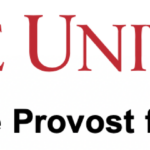Original story from Inside Iowa State’s “Toolkit, workshop help instructors deal with disruptions” (Aug. 29, 2019) web article
Last spring, the Faculty Senate passed revisions to the policy addressing disruptive conduct in a learning environment. Resources are available to help instructors identify and deal with situations that range from a single serious incident to frequent, unproductive interruptions.
The Center for Excellence in Learning and Teaching (CELT) provides a disruptive conduct toolkit on its website that may help instructors manage disruptive behavior. CELT also is in its second year of offering a 50-minute workshop on the subject.
“I don’t think we have seen a rise in disruptions, it is just as we have larger classrooms or are teaching more students [disruptions] seem bound to happen,” said CELT director Sara Marcketti.
Disruptive behavior toolkit
The toolkit, available since last spring, provides a guide on what instructors can do on the first day of class, and going forward, to clarify what they consider disruptive.
There are multiple examples of statements to add to a syllabus regarding disruptive behavior as well as a list of do’s and don’ts when dealing with unwanted conduct. Responses are detailed for scenarios — ranging from student academic misconduct to physically acting out.
When an action may be part of a bigger issue, the toolkit includes campus resources that provide help to students in need.
“Don’t be afraid to contact student assistance or the dean of students office if you don’t know what to do next,” CELT program coordinator Laura Bestler said. “If instructors are not able to find what they are looking for in the toolkit or after attending a workshop, [student affairs staff] will be able to assist them with what steps to take next.”
CELT workshop
The effectively managing disruptive conduct in learning spaces workshop was offered four times last year and will be offered twice this fall and spring, starting with the Oct. 1 program.
Participants complete activities to help them understand how to manage disruptions and learn more about available campus resources. They also go through active learning strategies to apply best practices in the growing number of places learning takes place, including classrooms, online, field trips or during office hours.
The CELT advisory board, made up of faculty, staff, and graduate and undergraduate students, provided feedback before the workshop launched.
When to take action
Each instructor decides differently when documentation of a disruption begins, but if a student displays disruptive behavior in one class, it is more than likely happening in others, Bestler said.
“Our No. 1 thing is to make sure our students are having a safe and productive experience while they are going to school,” she said.
When an instructor decides there has been a disruption, one of the most important steps is documentation, including time, date, a brief description of the conduct and any action taken. That may include a conversation or email with a student, contacting the dean of students office or, with more serious matters, reaching out to ISU Police.
ISU uses a graduated approach to deal with these issues, and faculty have expressed concern over the potential time involved in documenting disruptions.
“I think it is really important to remember when something happens and you document it, that helps other people down the line. It helps the student down the line,” Marcketti said. “We advise that instructors just take a minute and write down what went well and what they would change each day because days and months go by so fast. If you keep that running record, and do it consistently, it doesn’t eat up as much time.”
The toolkit has email templates to help instructors.
“It is a simple copy and paste and change a few things,” Bestler said. “It is an easy way to document the behavior that instructors experienced.”
Marcketti said instructors need to be aware that what is considered disruptive in one class may be acceptable in another, illustrating the need for clarity.
“It is easy to forget that students have three to five classes each semester, sometimes in many different colleges,” she said. “As an instructor, you are so passionate about your class. Students are getting different messages from all over campus on what expectations are.”








